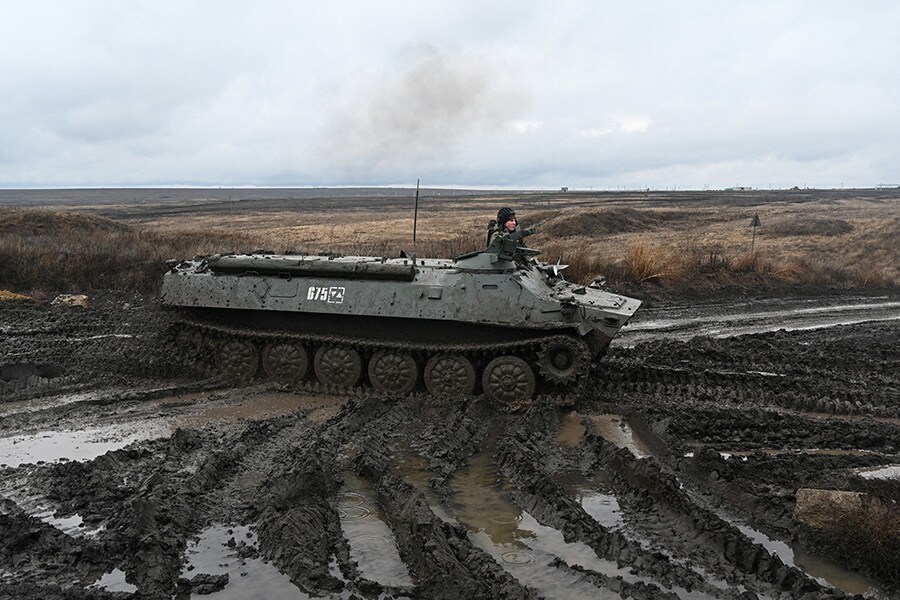
Russia positioning helicopters, in possible sign of Ukraine plans
The Russian president's window for an invasion is limited, dictated by temperatures that will freeze the ground before a spring thaw, which could begin by March, creating a muddy quagmire
 As long as the ground remains muddy, senior administration officials said, Putin might be forced to push back a ground offensive until February at the earliest
As long as the ground remains muddy, senior administration officials said, Putin might be forced to push back a ground offensive until February at the earliest
WASHINGTON — The number of Russian troops at Ukraine’s border has remained steady in recent weeks, despite U.S. intelligence predictions of a surge, but U.S. officials say that President Vladimir Putin has begun taking steps to move military helicopters into place, a possible sign that planning for an attack continues.
U.S. officials had expected additional Russian troops to stream toward the Ukrainian border in December and early January, building toward a force of 175,000.
While troop movements have slowed, there are still 100,000 military personnel near the border and now the Russians have positioned additional attack aircraft there, U.S. officials said. Attack and transport helicopters, along with ground attack fighter jets, would be a critical Russian advantage, should Putin decide to invade Ukraine.
U.S. officials say the Russian president’s window for an invasion is limited, dictated by temperatures that will freeze the ground — allowing for the easy movement of heavy vehicles and equipment — before a spring thaw, which could begin by March, creates a muddy quagmire.
But a relatively mild winter has slowed the ground’s freezing, and Putin’s deadline for committing his forces has slipped further toward the spring, officials say. The hard winter freeze that typically comes to Ukraine by January has not happened in many areas of the country. As long as the ground remains muddy, senior administration officials said, Putin might be forced to push back a ground offensive until February at the earliest. n
©2019 New York Times News Service





